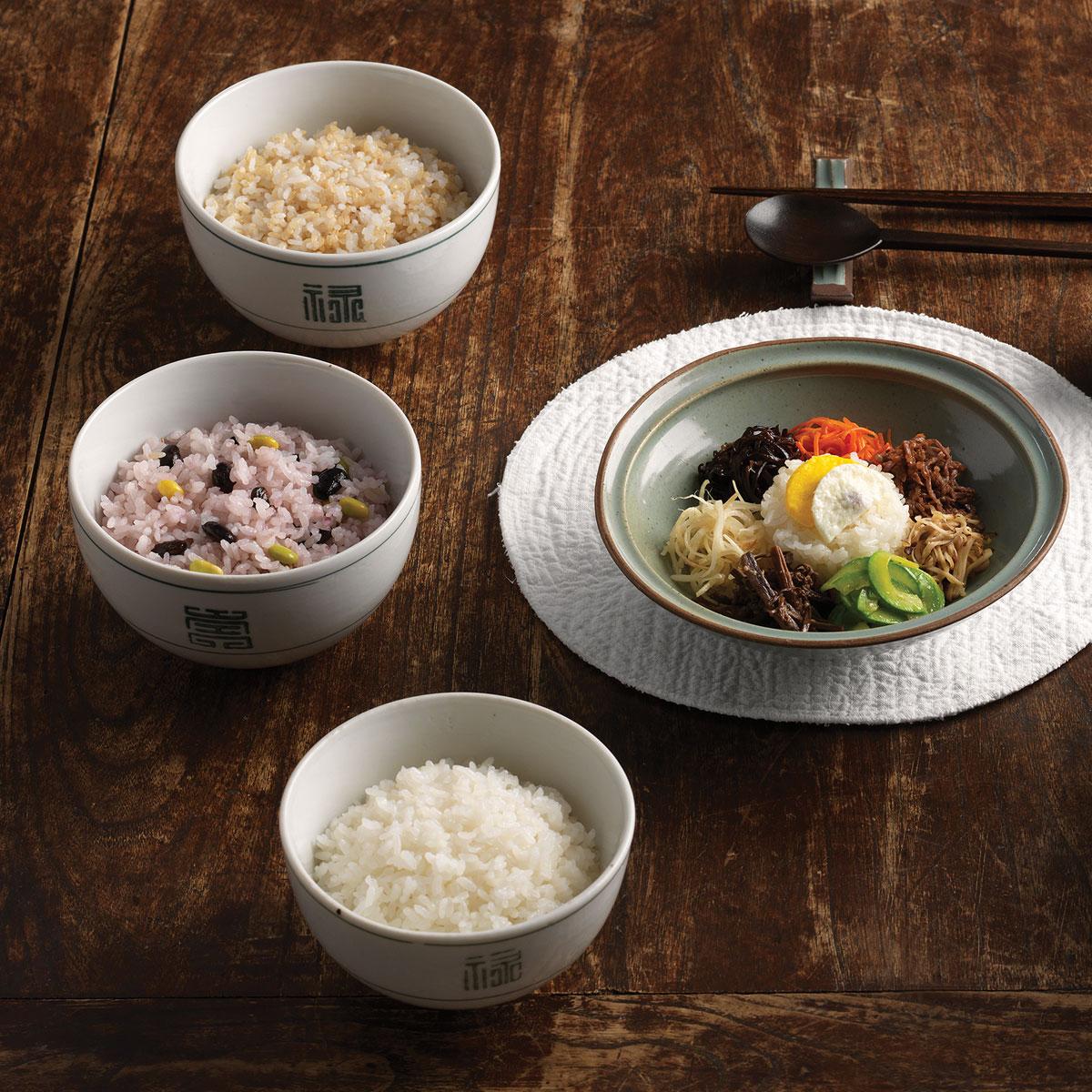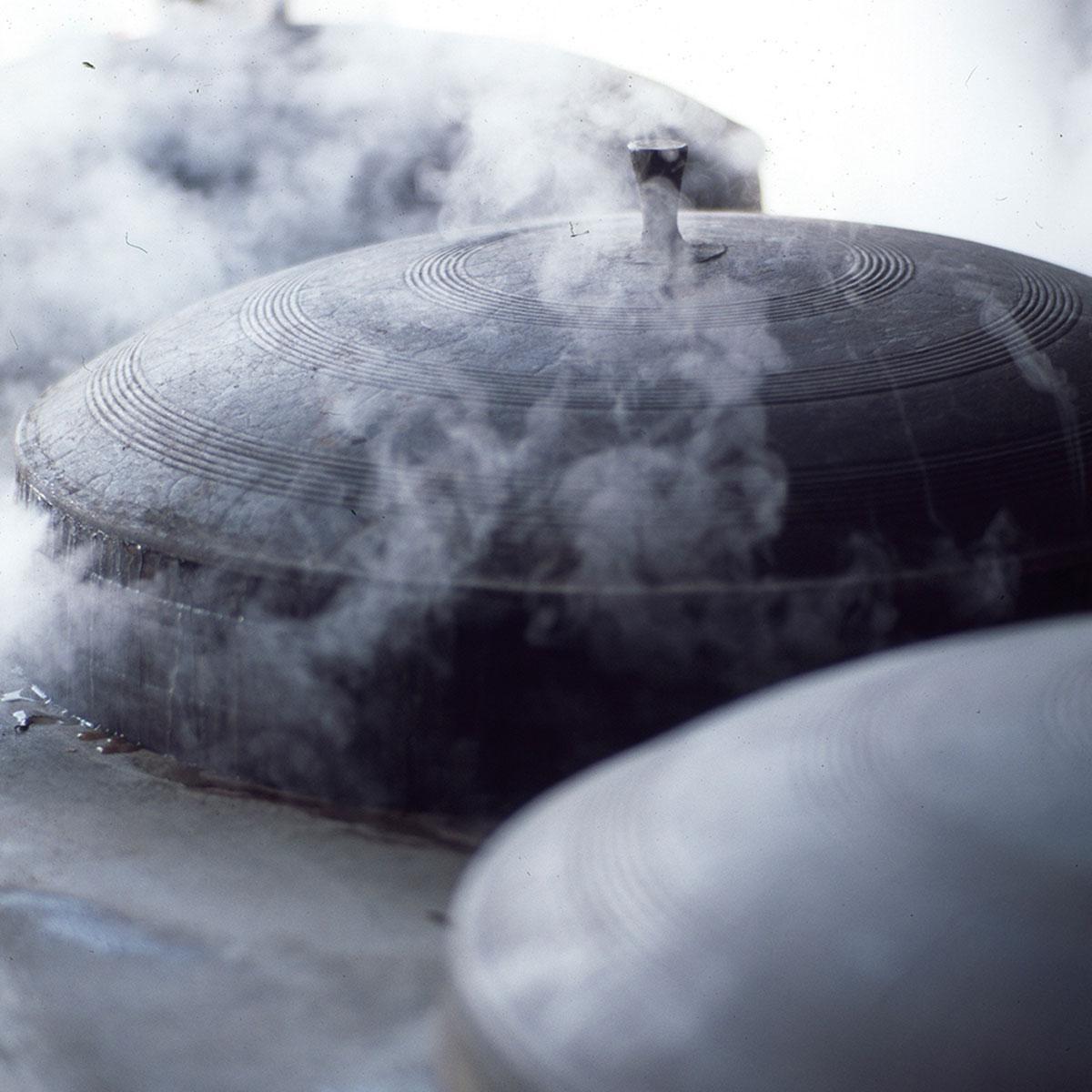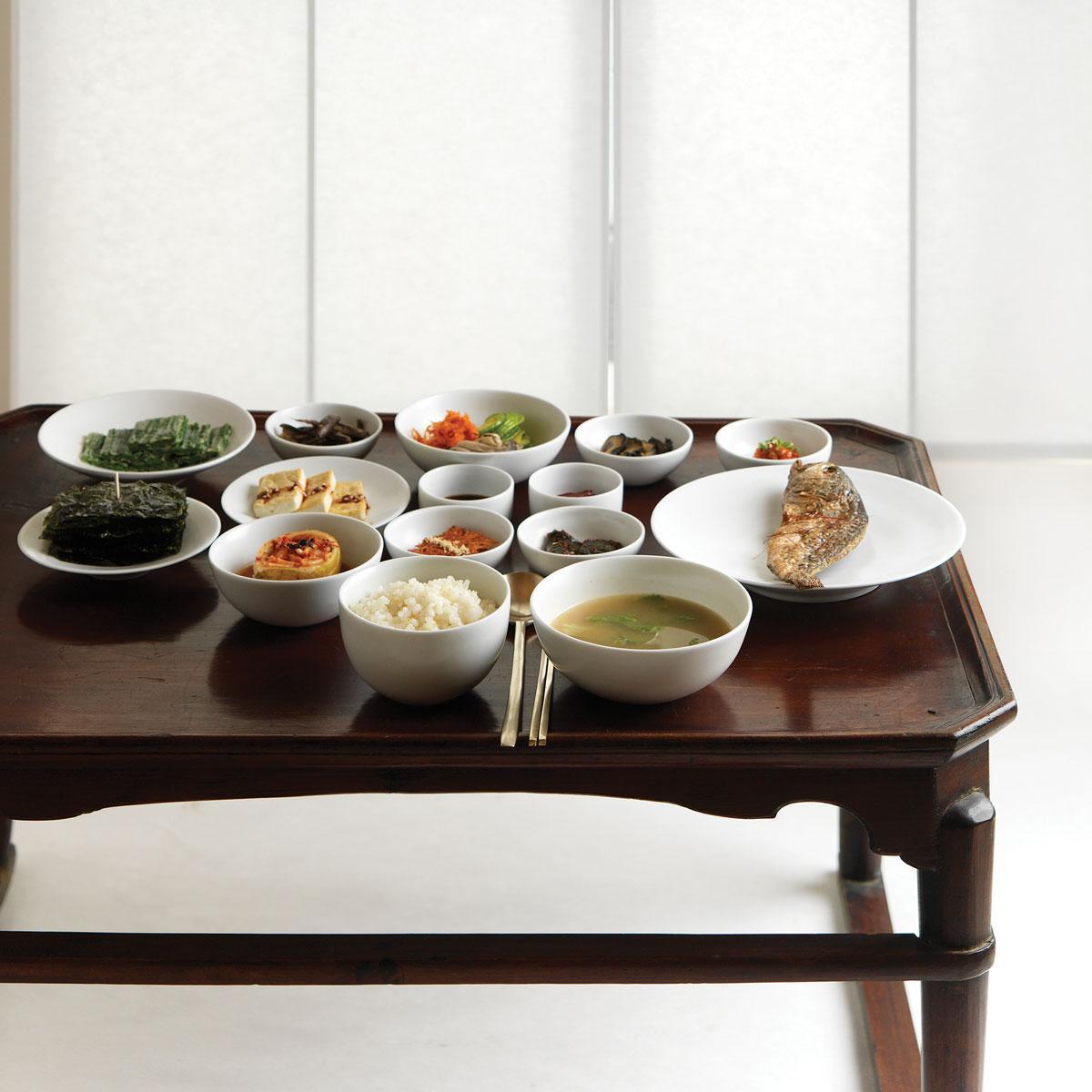AN ENERGIZING, NOURISHING AND PLEASANT CUISINE
Over the course of Korea’s 5,000-year history, Korean cuisine has evolved to include natural foods that are as nutritious as they are tasty. In line with the health trend worldwide, Korean cuisine is now becoming as ubiquitous as other popular Korean cultures like K-pop and K-drama. At the heart of its emergence as a global culinary trend, is the balance between the nutritive value and the delicious taste it offers.
Capturing the philosophy that “food and medicine come from the same root,” Korean cuisine primarily consists of nutritious vegetable dishes. Namul, or salad, is a great source of vitamins and minerals. Meat and fish are prepared by steaming, boiling, or pan-frying rather than deep-frying so as to preserve the inherent flavors. Korea’s kimchi¸ now globally established as a health food, along with the great variety of fermented condiments such as gochujang (red chili paste), ganjang (soy sauce), and doenjang (soybean paste) are not only healthy, but also enhance the flavor of food.
One of the joys of traveling is having the opportunity to taste the world, and learn the culture, history and customs of the visited countries. This book introduces the foundation and uniqueness of traditional Korean cuisine through popular and representative dishes including fermented foods like kimchi and traditional condiments, and also shows various food storing containers. It also provides information on Korean food experience centers, food festivals, street foods, and various culinary cultures like company gatherings and late night snacking. Table etiquette, useful expressions at restaurants, a shopping list, and other useful information will make traveling and eating in Korea easier and more fun.
So, come and explore the delicious world of Korean cuisine.
JITDA
To make
The Korean verb jitda, which can be simply translated as “to make”, is paired with words related to life, such as nongsa jitda (to farm), jip jitda (to build a house), si jitda (to write a poem), miso jitda (to smile), and lastly bap jitda (to make rice). For Koreans, rice symbolizes life. That is why they use the same verb for the act of cooking rice as they do for the act of farming to produces food and maintain lives; the act of building a house, in which people live; the act of writing a poem, which is often said to be the song of life; and the act of smiling, which is the expression of one’s inner life.
DAMDA
To contain
The Korean verb damda can be translated as “to contain.” When paired with nature, time, devotion, or memories, it figuratively means “to reflect.” It is also often paired with food. Koreans believe food should contain the values and devotion of those who make it, the wisdom and laws of nature, and the memories built by sharing it with others.
BAP
Korean cuisine is based on rice. The typical Korean meal table centers on rice, and it can be categorized by the number of side dishes served. Although the word bap literally means “steamed rice,” it also refers to a full meal. Rice is considered the basic energy source of the Korean people, and it is often said that Koreans live off rice. “Have you eaten yet?” is a very common and sincere greeting.
HISTORY OF DELICIOUS AND GLOSSY RICE
The most basic element in hansik is rice, which is made by boiling various grains such as rice. The Korean meal table consists of the staple dish of steamed rice, and is supplemented by various side dishes. The cultivation of rice began sometime between 10th to 15th century BCE, and other grains like millet, sorghum, proso and barnyard millet were grown since even before rice. Due to its long history, Koreans have always been famous for their great skills in cooking rice.
INEXHAUSTIBLE REPOSITORY OF FLAVORS AND NUTRIENTS
While rice can be cooked on its own as steamed white rice, there are also many other ways of making and serving rice: multi-grain rice is cooked with assorted grains such as barley, beans and red beans; bibimbap is a popular dish served with various seasoned vegetables and meat; dolsotbibimbap is a variation of bibimbap that is served in a hot pot to keep rice warm throughout the entire meal; kimchi fried rice is an all-time favorite among Koreans; ssambap is rice wrapped in various leafy vegetables, and haemulbap is rice cooked with oysters, mussels or other seafood. Because rice itself is not strongly flavored and it’s soft in texture, the possible combination dishes are endless.
A SYMBOL OF LIFE AND PASSION OF THE KOREAN PEOPLE
Rice is deeply rooted in Korean sentiment and culture. As rice is held “sacred” by Koreans, it is consumed with great appreciation to the last grain, and is regarded a symbol of life. When a baby is born, people say that “a spoon was added on the table,” and death is described as “putting down one’s spoon,” and rice is put into the mouth of the deceased. The love and compassion of the Korean people can be seen in the old saying “ten spoons of rice will make one bowl of rice,” which implies that by sharing just one spoonful of rice, a new bowl of rice can be made for the poor. If a Korean friend invites you for a home-cooked meal, it is an expression of gratitude and great friendship.






![[A ZONE] Gangnam Food Spot](https://m.dgram.co.kr/wp-content/uploads/2020/09/A존-알래스카3-특성이미지_S-218x150.jpg)
![[A ZONE] Gangnam Life Style](https://m.dgram.co.kr/wp-content/uploads/2020/09/로우클래식1-특성이미지_S-218x150.jpg)








![[A ZONE] Gangnam Food Spot](https://m.dgram.co.kr/wp-content/uploads/2020/09/A존-알래스카3-특성이미지_S-324x160.jpg)
![[A ZONE] Gangnam Life Style](https://m.dgram.co.kr/wp-content/uploads/2020/09/로우클래식1-특성이미지_S-324x160.jpg)




